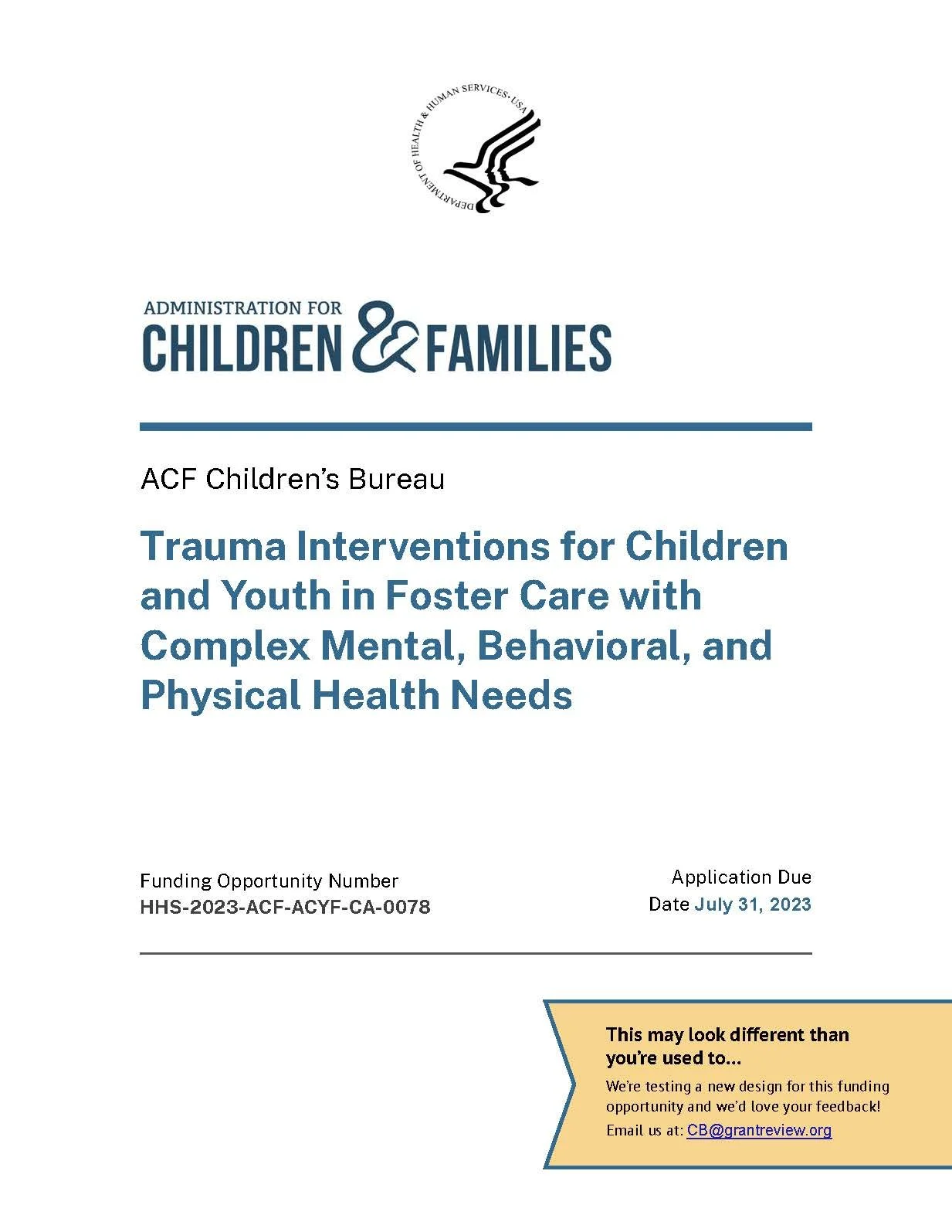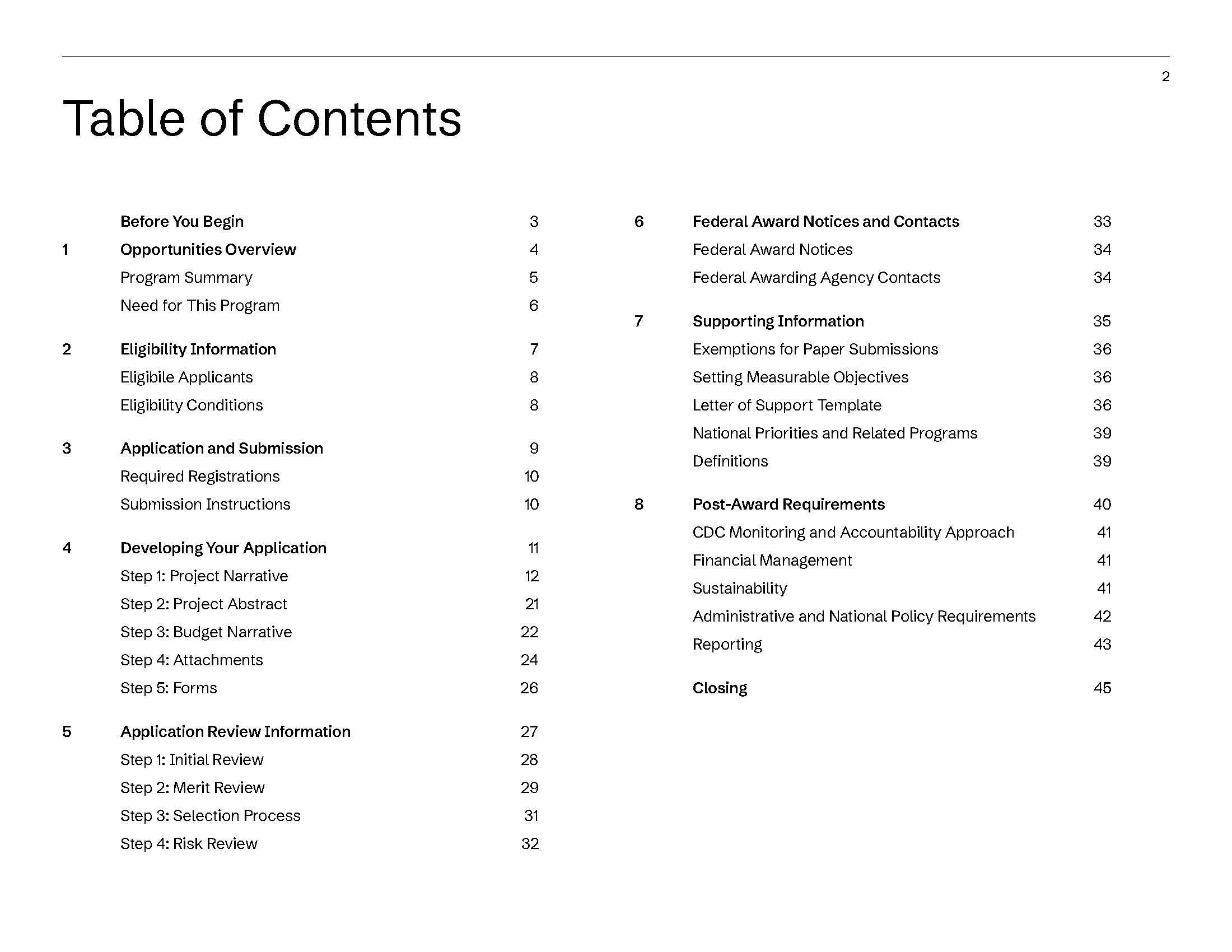Simplifying Notices of Funding Opportunity at HHS
Organization: U.S. Department of Health and Human Services
Role: Design and Evaluation Lead
SimplerNOFOs team included: Project Lead, Content Lead, and Bloom Works Digital Team comprised of Product Design Lead, Product Design Managers, User Researcher, Technology Lead, Plain Language Coaches
Design Challenge
The federal grant application process is time consuming and often confusing, especially for new and lower capacity applicants who find themselves overwhelmed by the requirements.
The Office of Grants at HHS spent time researching some of the major challenges associated with applying, and started the Simpler Grants initiative to improve the process. The first two projects in this portfolio are:
Simplifying Notices of Funding Opportunity (NOFOs) for HHS
The modernization of Grants.gov used by 26 federal agencies
Notices of Funding Opportunity (NOFOs) contain key information about funding opportunities at the U.S. Department of Health and Human Services (HHS), and about how to apply for them.
They’re currently long, dense, have inefficient information architecture, little visual hierarchy, and are often written using complex government speak instead of plain language.
Design Response
In the Spring of 2023, we started with a “learn and scale” approach and developed four Simpler NOFO prototypes that were published by the Centers for Disease Control and Prevention (CDC), the Administration for Children, Youth and Families (ACF), The Administration for Community Living (ACL), and the Substance Abuse and Mental Health Services Administration (SAMHSA).
Each prototype had bespoke information architecture, visual design, and writing.
Sample pages from “Standard” NOFO (cover page, table of contents, and basic information):
Sample pages from the ACL prototype (prototype #1) designed by me:
Sample pages from the ACF prototype (prototype #2) designed by the Lab at OPM:
Sample pages from the CDC prototype (prototype #3) designed by Huge:
Sample pages from the SAMHSA prototype (prototype #4) designed by the Lab at OPM:
Matching requirement content pre-improvement:
Improved matching requirement content:
Evaluating the prototypes
I led the evaluation of the prototypes which included developing a research plan, submitting it for PRA approval and conducting:
User interviews
Focus groups
Usability tests
Comparison analysis
Surveys
We found that:
Simpler NOFO prototype applicants spent 31% less time on average applying for a grant compared to their standard NOFO peers
Word count and reading time decreased by 60%
Sentence length decreased by 40%
Reading level decreased by 4.0 grade levels
Page count decreased by 17%
We also learned which information architecture, visual design, and content elements were most effective for applicants.
Scaling up to 71 Pilot NOFOs
We knew after the prototype round that creating bespoke NOFOs was not sustainable, so we contracted with Bloom Works to create an open source NOFO design builder tool, as well as to provide plain language coaching to program teams.
The builder tool automates the visual design to create 508 compliant HTML and pdfs, significantly reducing the labor associated with visual design.
The builder tool uses a design system that takes components from:
The findings from our prototypes
Customizable features selected by our Operating Division partners
Samples pages from one of our 71 pilot NOFOs. We developed content guides for each Operating Division and used a design system combined with agency-specific branding elements to create a consistent, more standardized structure.
Our pilot evaluation helped us understand what additional improvements we could make to the information architecture, visual design, and information quality as we scale up to 250 NOFOs in Year 1, including:
Consolidating content to reduce the number of “steps” from 6 to 5 to be: 1) Review the opportunity; 2) Prepare your application; 3) Learn how you’ll be evaluated; 4) Submit your application; 5) Understand expectations post-award; and streamlining the content within
Better aligning the application requirements with the content in the program description, and the rubric
Using the rubric as the guidepost for content since it’s the most critical component for applicants
Scaling back on full-color pages for printing purposes (note: not all pilot Simpler NOFOs used full-color pages)
This project is still ongoing, but an area where I was recently successful was making substantial edits to the information architecture of the content guides that are used as the foundation of NOFOs. Two CDC Drug Free Communities NOFOs will be published in the Spring of 2025 with the more streamlined, easy-to-follow structure. A lesson learned for me as part of this work was a reminder that some project partners may not “buy in” to a design recommendation until there’s clear feedback from users, so it’s helpful to get user input and feedback as early as possible and to always be a strong advocate for codified design practices.
_

























